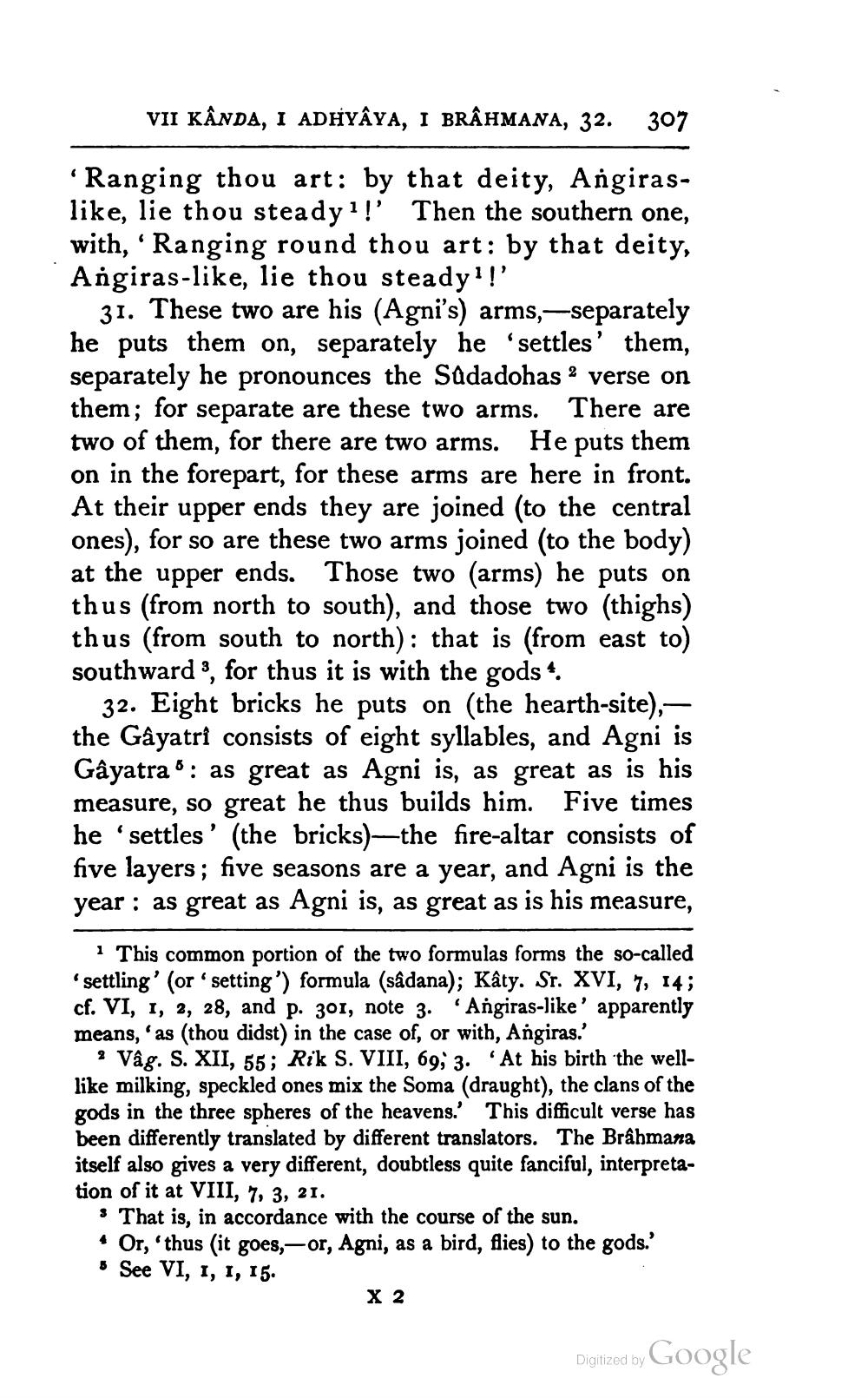________________
VII KÂNDA, I ADHYAYA, I BRÂHMANA, 32.
307
*Ranging thou art: by that deity, Angiraslike, lie thou steady 1!' Then the southern one, with, 'Ranging round thou art: by that deity, Angiras-like, lie thou steady'!'.
31. These two are his (Agni’s) arms, separately he puts them on, separately he settles' them, separately he pronounces the Sadadohas 2 verse on them; for separate are these two arms. There are two of them, for there are two arms. He puts them on in the forepart, for these arms are here in front. At their upper ends they are joined (to the central ones), for so are these two arms joined (to the body) at the upper ends. Those two (arms) he puts on thus (from north to south), and those two (thighs) thus (from south to north): that is (from east to) southward, for thus it is with the gods 4.
32. Eight bricks he puts on (the hearth-site),— the Gayatri consists of eight syllables, and Agni is Gayatra 6: as great as Agni is, as great as is his measure, so great he thus builds him. Five times he 'settles' (the bricks)—the fire-altar consists of five layers; five seasons are a year, and Agni is the year : as great as Agni is, as great as is his measure,
1 This common portion of the two formulas forms the so-called settling' (or setting') formula (sâdana); Kâty. Sr. XVI, 7, 14; cf. VI, 1, 2, 28, and p. 301, note 3. “Angiras-like' apparently means, as (thou didst) in the case of, or with, Angiras.'
Vâg. S. XII, 55; Rik S. VIII, 69, 3. At his birth the welllike milking, speckled ones mix the Soma (draught), the clans of the gods in the three spheres of the heavens. This difficult verse has been differently translated by different translators. The Brâhmana itself also gives a very different, doubtless quite fanciful, interpretation of it at VIII, 7, 3, 21.
s That is, in accordance with the course of the sun. • Or, 'thus (it goes,-or, Agni, as a bird, flies) to the gods.' 5 See VI, I, I, 15.
X 2
Digitized by Google




